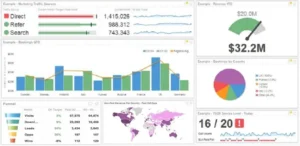We’ve heard from you. We know! The switch from Classic to Lightning is making you nervous. No worries. We’ve got your back.
To misquote Mark Twain: “Reports of the demise of Salesforce classic have been greatly exaggerated.”
That’s right, while Salesforce is strongly urging all users to move to the Lightning platform it is not pulling the plug on Classic. Lightning is definitely the future for Salesforce users. It looks good, it improves processes and really embraces the “clicks not code” philosophy. For businesses that use Salesforce Classic as their CRM resource, it will be a change but not an earthshaking one. While the pressure is on, you are not going to lose the safety and comfort of Classic if that’s what you are most familiar with just yet.
Transitioning to the Lightning Experience takes time in order to have a smooth transition. Salesforce is slowly but surely nudging customers to make the leap into Lightning. This includes some customers not even having access to use Salesforce Classic, which came from the Summer ’18 release. All this change is clearly influenced by the rise of mobile. Sales reps at your company are already using mobile to research prospective customers, get directions to client meetings, connect socially with customers, and more. Lightning Experience essentially takes the cool stuff from the Salesforce mobile experience and brings it to the desktop.
When is Lightning going live for all instances?
In October 2019, Salesforce started turning on Lightning for orgs on a rolling basis. By January 31, it will be turned on for everyone. This means that your data remains but visually things may look different when you log in. Never fear. Remember what we said – Classic is not going away, it’s just not as obviously available.
Are you Sure Classic is sticking around?

There’s plenty of evidence that Classic is going to be around for a while yet. Salesforce won’t go on record and name the date when Salesforce Classic will no longer be an option. Although, when asked, a spokeswoman pointed to the Spring ’19 release notes, which only said Salesforce stopped adding features to Classic. Elsewhere, the company’s official feature retirement policy stated that admins will get 12 months written notice before features like Salesforce Classic close, which hasn’t happened yet.
But I love working in Classic, how do I get there once Lightning is turned on for my org?
Lightning and Classic currently exist side by side on the Salesforce Cloud, and users have the option to toggle between the two views. Think of it as a ‘try it, you’ll like it’ proposition.
To switch to Lightning Experience from Salesforce Classic, click your name in the Salesforce Classic header, then click Switch to Lightning Experience. To return to Salesforce Classic, click in the profile icon and select Switch to Salesforce Classic.
What are the benefits of switching over to Lightning entirely?
If you could have a flip phone or a smart phone to do the same job which would you want? If you don’t make the switch, you will be missing out on the great features the new interface has to offer. In addition to future features, there’s one other important consideration: Any new innovation Salesforce creates in the future will only be built into the Salesforce Lightning Experience. So, not only would you be missing out on all that the new version has to offer, you would be missing out on shiny new features in the foreseeable future.
Your competitors are probably already taking advantage of the new Salesforce. So, while you are using the most innovative CRM and sales tool out there, you’re not really getting all the benefits if you’re using the older version. This is true in any software application, not just Salesforce!
What does the future hold?

We’re not claiming to have a crystal ball here at Cloud Next Level but…. at some point in the future — whether it’s three months from now or, three years from now or some time beyond that — access to the Salesforce Classic user interface will stop. Salesforce clearly isn’t going to support an outdated system forever nor should they be expected to. Already there are lists of features not being supported in Classic:
-
Classic Designer: Starting with Winter ’20, admins are no longer be able to create, edit, or open dashboards in Classic designer. Existing Classic designer dashboards must be converted to the new Dashboard Designer.
-
Salesforce Classic HTML-Based Email Templates: A critical update from Summer ’18 was enforced in the Winter ’20 release. Classic HTML-based email templates can no longer be accessed using Microsoft Internet Explorer, because IE does not support the Salesforce Content Security Policy (CSP).
-
Einstein Discovery Classic: This feature will be retired in the Spring ’20. Current datasets and stories must be recreated in Analytics Studio.
-
Customizable Forecasting: This feature and its underlying data will be retired in the upcoming Summer 2020 release. Customizable Forecasting is a Classic-only capability, which has been replaced by Collaborative Forecasts.
The future of your Salesforce system inevitably includes a switch to Lightning!
How to make the switch:
We’ve written about this before. Check out our blog posts about The Transition To Salesforce Lightning and the Benefits of Salesforce Lightning.
Hera are a few reminders for making the transition work best for your users…
Engage your front-line users well in advance, and let them experiment with Lightning offline and give feedback on what is and isn’t working. Including your super users in the transition will make the rest of your users more comfortable. It also gives your whole company an in-house resource to walk through the change. Salesforce-savvy employees will see the Lightning transition as an opportunity to volunteer as superusers or even upgrade their own jobs.
Once you’ve got a few super users on board and testing follow these steps.
-
Run the Readiness Check, to see how prepared your Org overall is
-
Test out the Lightning Experience in a Sandbox to see how your environment looks in Lightning
-
See how new Lightning features can benefit your org
-
Review the Compare Lightning Experience and Salesforce Classic chart
Making the transition to Lightning is another investment in your organization. Taking the time to evaluate your organization and prepare is an investment in the future.
Need help with any of this? We’re here for you. Get in touch and we can evaluate your organization’s readiness, help with development concerns and even train your staff in the new experience. Let us take your company to the Next Level with the Salesforce Lightning experience. Contact us now!








